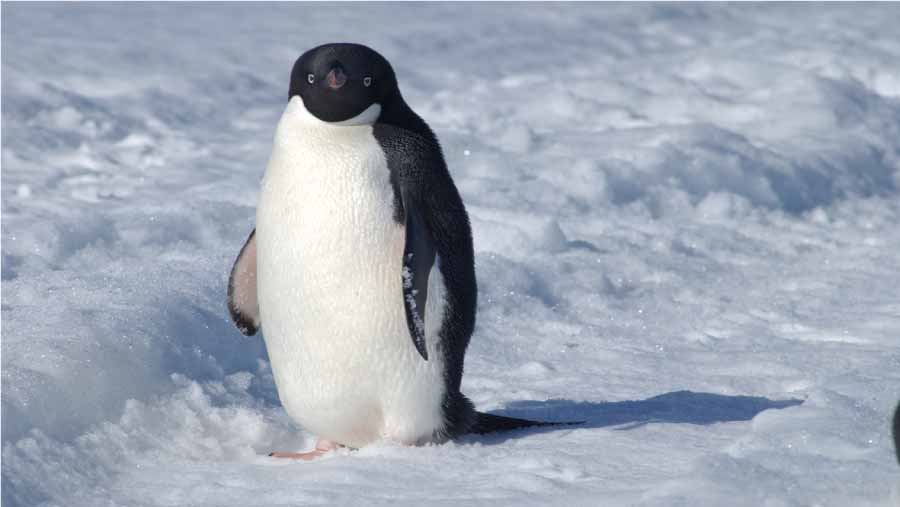The penguin is a seabird that cannot fly, but they are excellent swimmers and divers. They are easily recognizable by their black and white plumage and their way of walking with their legs back. Penguins mainly inhabit the poles and in some temperate regions of the southern hemispheres and unfortunately some species are in danger of extinction due to human activity.
Penguin feeding
Penguins’ diet varies depending on the species, but in general they feed mainly on fish, crustaceans and squid. Emperor penguins, for example, feed mainly on free-living fish such as herring and blue whiting, while Galapagos penguins feed mainly on crustaceans. Some species of penguins also feed on krill and plankton. Penguins must swim great distances to find their food, and in some species, males and females take turns feeding their young.
Coexistence of the penguin
Penguins are solitary and social animals at the same time, depending on the species and situation. Some species, such as emperor penguins, live in massive colonies and gather in large groups during the breeding season. Others, such as the Galapagos penguin, live in smaller colonies and may be more solitary during the rest of the year. Penguins are generally peaceful animals and do not usually have conflicts with each other, although they can compete for resources such as water and food. Penguins also have complex social relationships, with an established hierarchy within colonies and a strong bond between breeding pairs.
Lifespan of penguins
The lifespan of penguins varies depending on the species, but in general they can live between 15 and 20 years in the wild. Some species such as the emperor penguin and king penguin can live up to 25 years, while others such as the Galapagos penguin can live less time, around 15 years. However, the half-life of a penguin in the wild is around 10 years due to difficult living conditions and natural and human threats. In captivity, penguins can live longer due to better living conditions and veterinary care.
Temperature at which they can live without problems
Penguins are animals adapted to live in cold and temperate climates, and can withstand very low temperatures thanks to their dense layer of feathers and fatty subcutaneous tissue. However, most penguin species live in specific warm and cold regions and cannot survive in too hot climates.
For example, emperor penguins live in Antarctica, where temperatures can be as low as -60 degrees Celsius, while Galapagos penguins live in warm temperate climates and cannot withstand very cold temperatures. Penguins also have mechanisms to regulate their body temperature, such as the ability to adjust blood flow to their limbs and control the number of feathers exposed.
Behavior with humans
Penguins are wild animals and generally do not have a close relationship with humans. Although some species, such as the Galapagos penguin, can be curious and even approach humans, most species are reserved and avoid contact with humans.
It is important to remember that penguins are wild animals and should not be fed or petted by visitors in national parks or nature reserves. Human contact can be detrimental to the health and well-being of penguins and can disrupt their natural behavior. In addition, human activity in the places where penguins live can cause stress, disturb their habitats and endanger species. Therefore, it is important to follow the guidelines and regulations established to protect penguins and their habitat.
Bless you
The health of penguins can be affected by a variety of factors, both natural and human. Some common diseases in penguins include:
Respiratory diseases: Penguins are prone to respiratory infections due to exposure to extreme weather conditions and bacteria and viruses present in their habitat.
Parasites: Penguins can suffer infestations from external parasites such as worms and mites, as well as internal parasites such as nematodes and cestodes.
Injuries: Penguins can suffer injuries due to competition for food, interaction with other animals, and extreme weather conditions.
Pollution: Water and air pollution can affect the health of penguins and endanger their survival.
Climate change: Climate change can lead to changes in penguin habitats and feeding patterns, and can also increase the incidence of diseases and pests.
It is important to note that penguin populations are endangered due to human activity, such as fishing, habitat destruction, pollution, and climate change. Therefore, it is necessary to protect them and their habitat to ensure their long-term survival.


